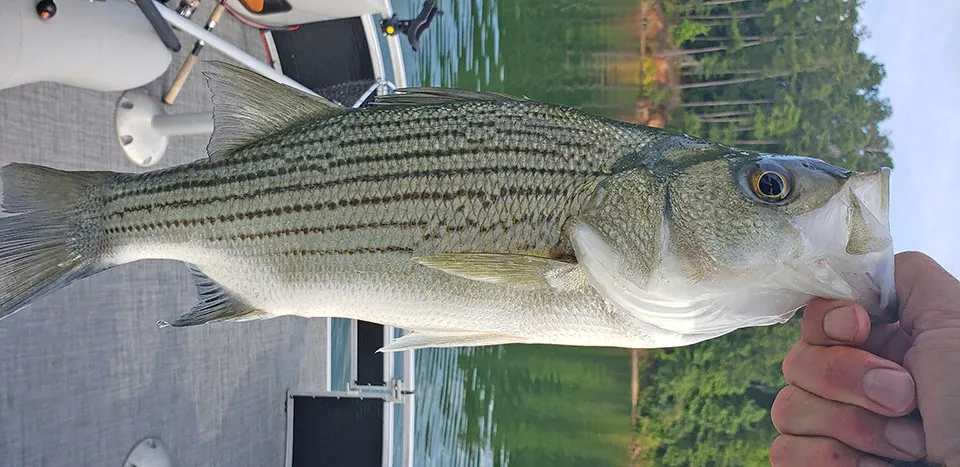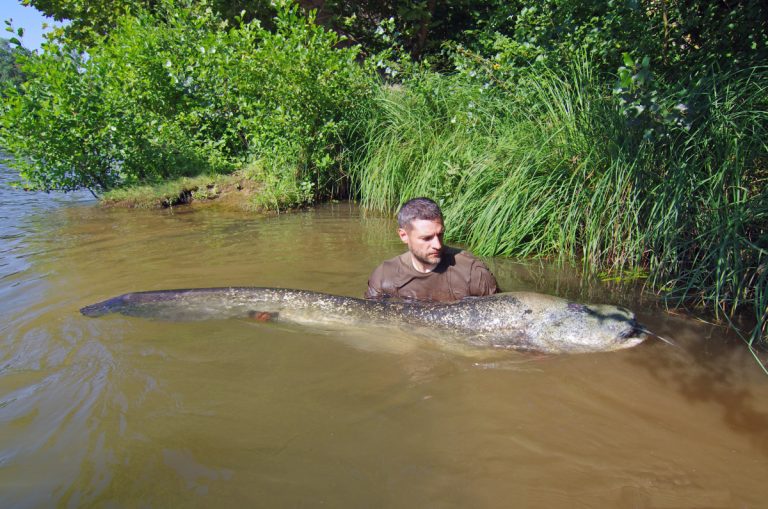Lake Allatoona, located in Georgia, is the 10th-largest lake in the state and boasts a diverse range of aquatic life. Although it may not be as deep as Lake Lanier or Carters Lake, with a maximum depth of 145 feet, Lake Allatoona is still considered quite deep.
Nestled amidst serene surroundings, Lake Allatoona is a thriving habitat for a diverse range of aquatic creatures, including numerous fish species. It’s no surprise that the lake is a frequent hotspot for fishing and recreational activities, attracting a large number of enthusiasts. Interestingly, many anglers prefer to fish at night, when the lake is relatively peaceful. In this article, you’ll discover some fascinating insights into the wonderful world of fish residing in the beautiful Lake Allatoona.
Bass Fishing
When it comes to bass fishing in Lake Allatoona, there’s no shortage of species to target. In fact, around 85% of the bass found here are spotted bass, which typically measure around 12 inches long. However, you can also expect to find older spotted bass that can reach 20 inches or more in length. While largemouth bass tend to be slightly larger than spotted bass, the average weight of a largemouth caught in the lake is only 1.25 pounds.
During different seasons, bass tend to prefer certain baits. When the weather is cooler, it’s best to use reactive baits such as shallow-diving crankbaits or spinnerbaits. As the winter season progresses and it gets closer to April and May, when spotted bass spawn, it’s recommended to stay shallower. By understanding the seasonal preferences of bass, you can improve your chances of a successful fishing trip.
When it comes to largemouth bass, they tend to stick to the shoreline and look for areas where they can find shelter. Fallen trees and other debris can create the perfect habitat for them. If you’re searching for them, be sure to check the backwater spots in Etowah, Allatoona Creek, and the Little River. These shallower areas are where you’re likely to find them lurking.
Spotted bass tend to dwell in deeper areas compared to their largemouth counterparts. During the warmer months, anglers often rely on plastic worms and a ⅛ or ¼ ounce drop shot weight to catch these fish. However, as the temperature increases in late May, it’s best to explore deeper areas of the lake. In fact, there are more than 36 deepwater fish attractor sites located underwater that are most productive from late summer through early spring.
Bass: Striped and Hybrid
While not as prevalent as largemouth and spotted bass, striped bass can still be caught with a bit of effort. To increase your chances, try slow trolling with live shad on weighted or free lines. The prime time to catch stripers is during the fall to late spring. In early spring, you can find them in the upper areas of Lake Allatoona while they spawn. During the summer, follow their migratory path up to Etowah River.
Hybrid bass can be caught throughout the year, but they are most abundant during the summer months. During this time, they tend to stay in deeper, cooler waters. To catch them, trolling with live shad using the same method for catching stripers is a good strategy. The optimal depth range to find hybrid bass is usually around 20 to 30 feet.
Crappie
Specks or speckled bass, commonly known as Crappies, are a smaller fish species in Lake Allatoona that usually weigh about half a pound. However, some larger crappies can weigh up to 2 pounds. In 2022, the largest black crappie caught on Allatoona weighed 3 lbs 7 ozs, while the largest white crappie caught that same year weighed 3 lbs 4 ozs, breaking the previous record.
During the spring season, Kellog, Illinois, and Stamp Creeks, as well as the Etowah River, are the ideal fishing spots. To increase your chances of catching fish, you can either troll using jigs or move around every few minutes to follow the fish. To ensure a bite, live minnows and small jibs on bobbers are highly recommended. In the summer, similar to bass, it’s crucial to check the fish attractors for crappie. They typically gather in cooler and deeper waters. During the fall and winter seasons, they tend to be in warmer areas, such as the edges of the river channels.
Bream
Lake Allatoona boasts a good population of bluegills, as well as some redear and redbreast sunfish. These species are relatively smaller than the likes of bass and crappie, with an average length of 5 to 7 inches. However, some redear sunfish can grow up to 9 inches long, making them the largest of the three. When targeting bream, live bait such as minnows or worms can be quite effective. Trolling with bait on bobbers is also a great way to cover more ground and increase your chances of a catch.
Smallmouth Buffalo
Smallmouth buffalos are a fascinating species of fish that can be found in the Etowah River. Although they may look like carp, they are scientifically classified in a different family. These fish have a long lifespan of around 20 years, which means that they have the potential to grow to a massive size. To catch them, it is recommended to use a circle hook with corn or a dough ball on the end. Some people even resort to bowfishing for this species, especially during nighttime.
Blue, Channel, and Flathead Catfish
When it comes to fishing, the Flathead, Blue, and Channel catfish are highly sought after due to their tantalizing flavor and suitability for frying. The Blue catfish, in particular, tends to be the largest of the three, with the current record on Lake Allatoona standing at an impressive 52 lbs 1 oz as of 2020. Aaron Churchwell, an avid angler, caught this record-breaker on a chilly October night, using pieces of a 2 lb catfish he had caught earlier in the day as bait. If you’re on the lookout for catfish, the cliffs near Little River and around the bridge are great spots to explore. These fish tend to inhabit rockier areas, so you may also find them around islands.
Alligator Gar and Longnose Gar
In the summer of 2023, Caleb McClure caught a massive longnose gar in Lake Allatoona, breaking the lake record. This gar weighed in at an impressive 27 lb 4 oz and was nearly 5 feet long, making it one of the largest catches in the lake’s history. With such an impressive catch, it’s safe to say that Lake Allatoona is teeming with gar, making it a popular destination for anglers looking for a challenge.
Although it may not be guaranteed that you’ll catch massive gars every time, the majority of the gars in the lake typically range from 3 to 4 feet in length. To increase your chances of catching these behemoths, using live shad or minnows on bobbers is highly recommended.
Carp Fishing
Carp, much like gar, can grow to be pretty sizable, ranging from 5 to 15 pounds. They can be caught through bow fishing or by using bottom rigs with corn, dough, or worms as bait. These fish tend to inhabit areas with underwater vegetation and can often be found near downed trees. As an angler, it would be wise to explore backwaters and coves in the vicinity of Stamp Creek and the neighboring island for the best chance of landing a catch.
Alligators in Lake Allatoona
Although alligators are not commonly found in Lake Allatoona, they have been spotted in the area on rare occasions. According to the Northwest Region Game and Fish Division, a four-foot alligator was removed from the lake in 1989, and a year later, a six-foot alligator was also found and removed. Despite their infrequent appearances, it’s important to remain cautious and aware of the potential presence of these reptiles in the area.
The Fall Line is a geological feature that separates North and South Georgia. This boundary was created thousands of years ago when the ocean covered most of the East Coast, and the state’s land areas were much smaller. The rocky border left behind where the ocean met the land now divides the northern ‘Piedmont’ region from the southern ‘Coastal Plain’.



